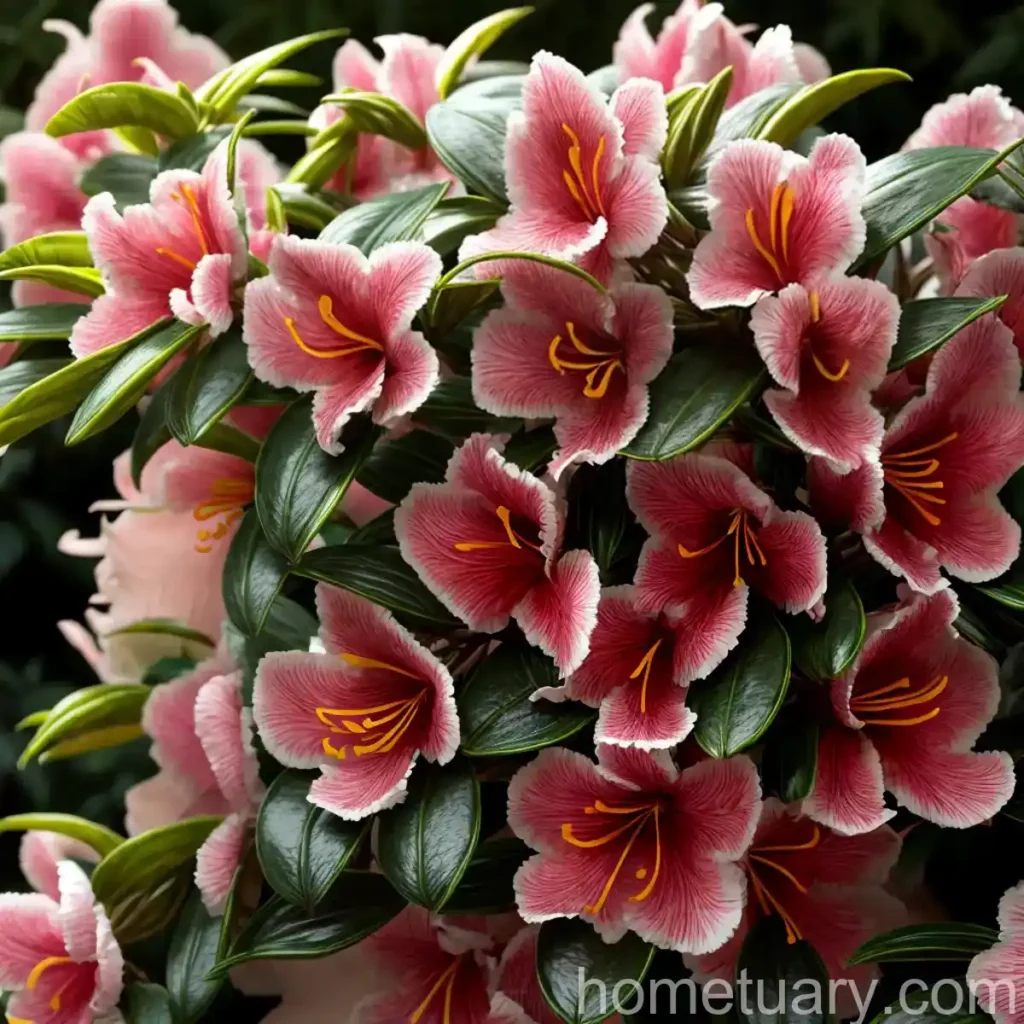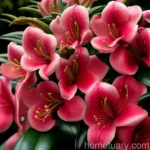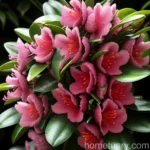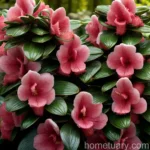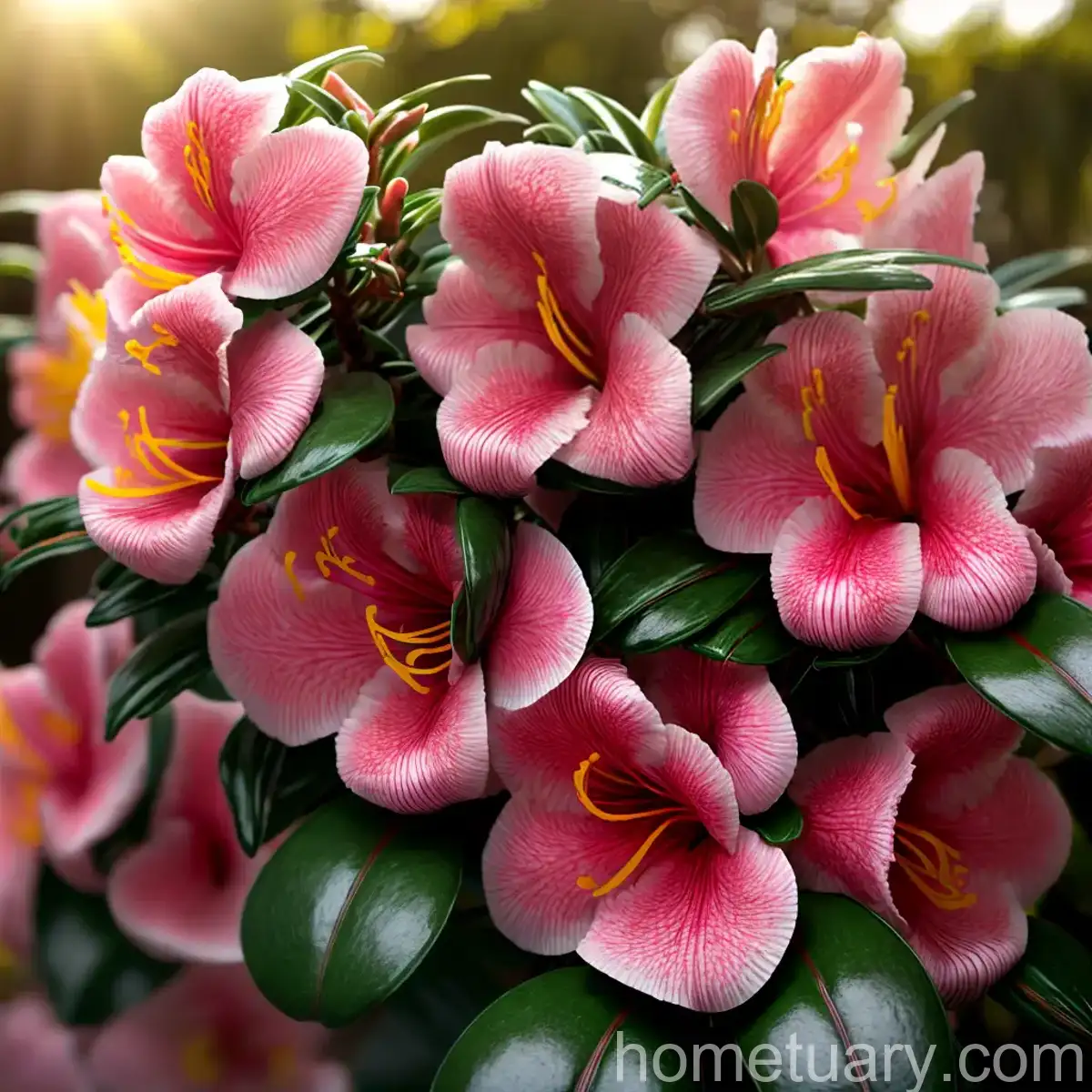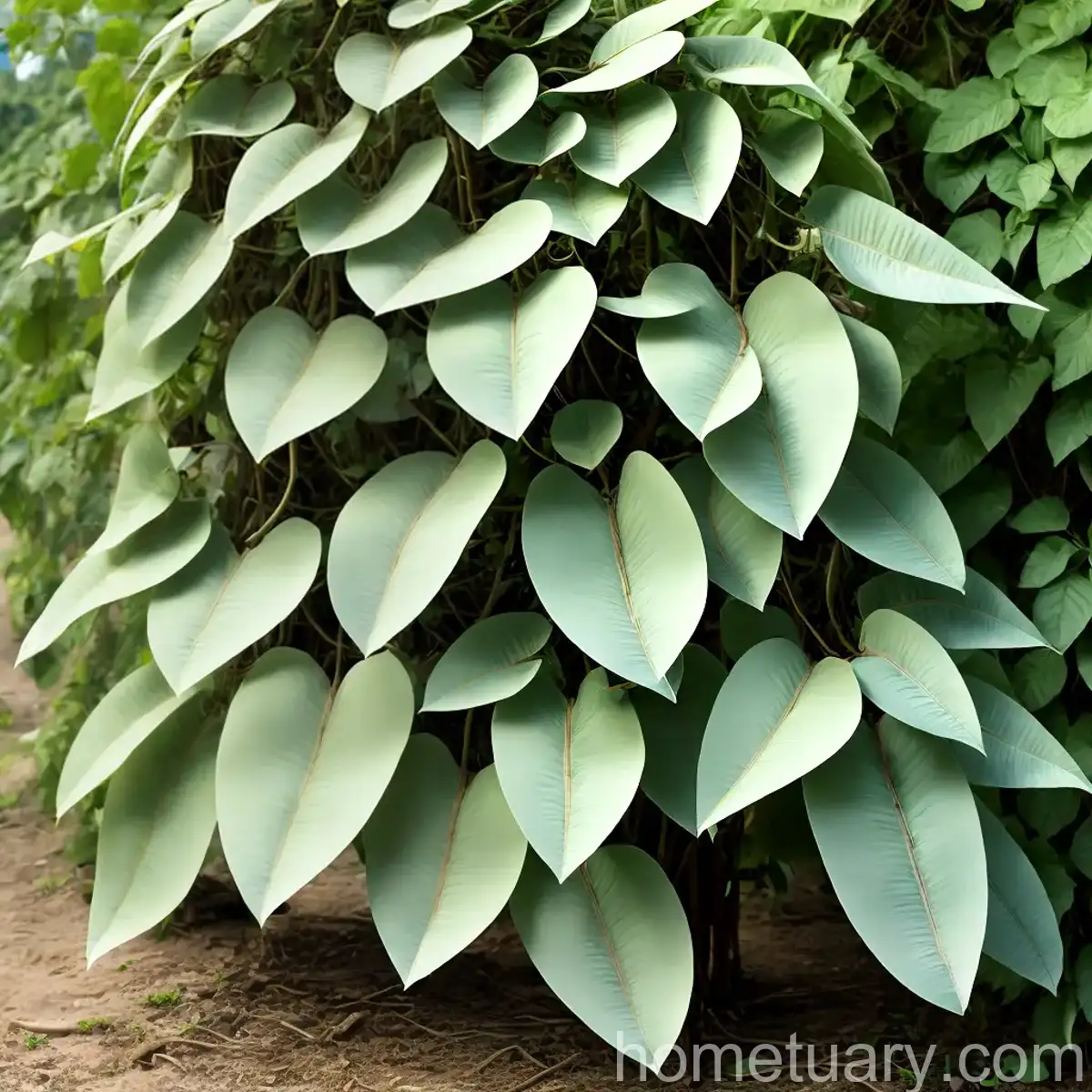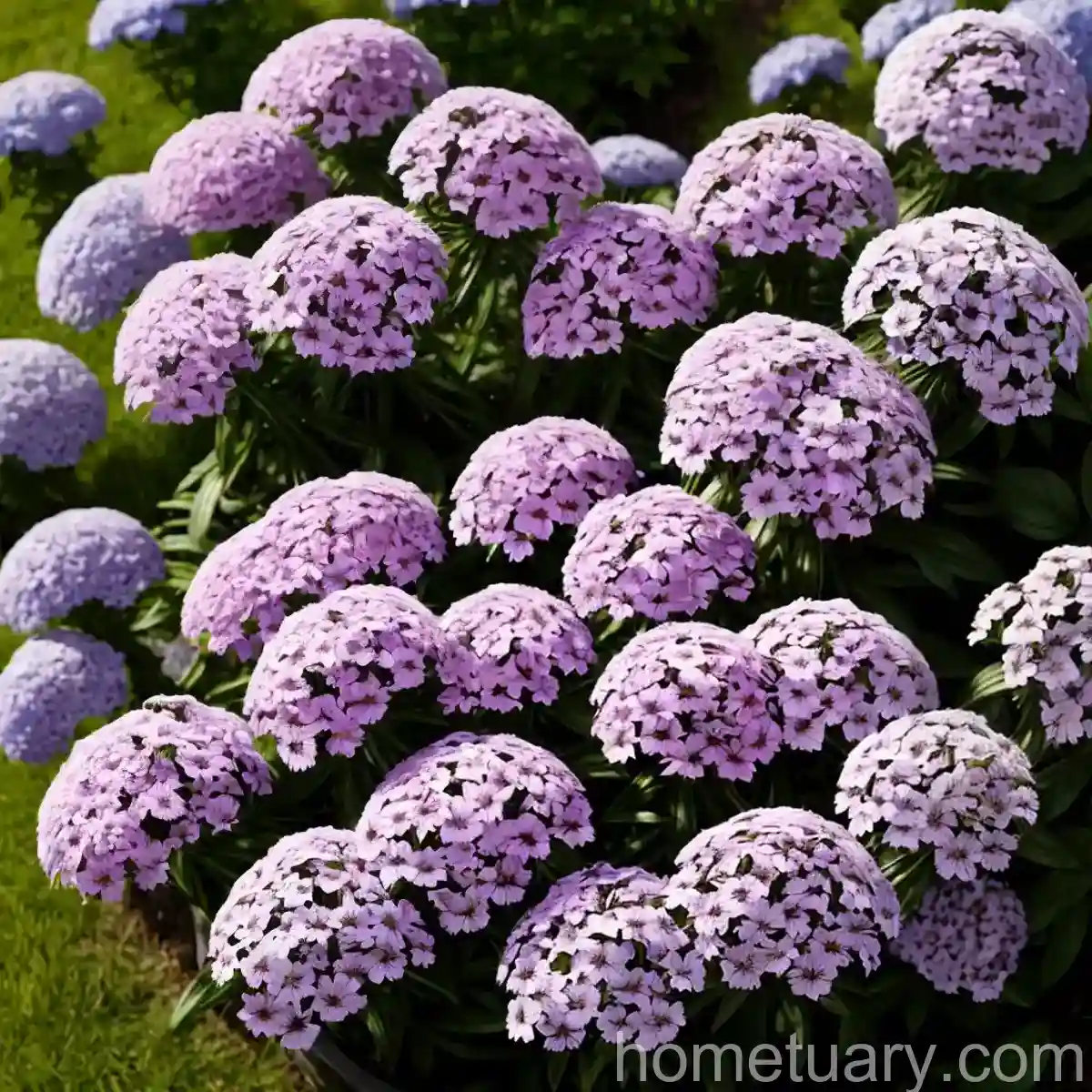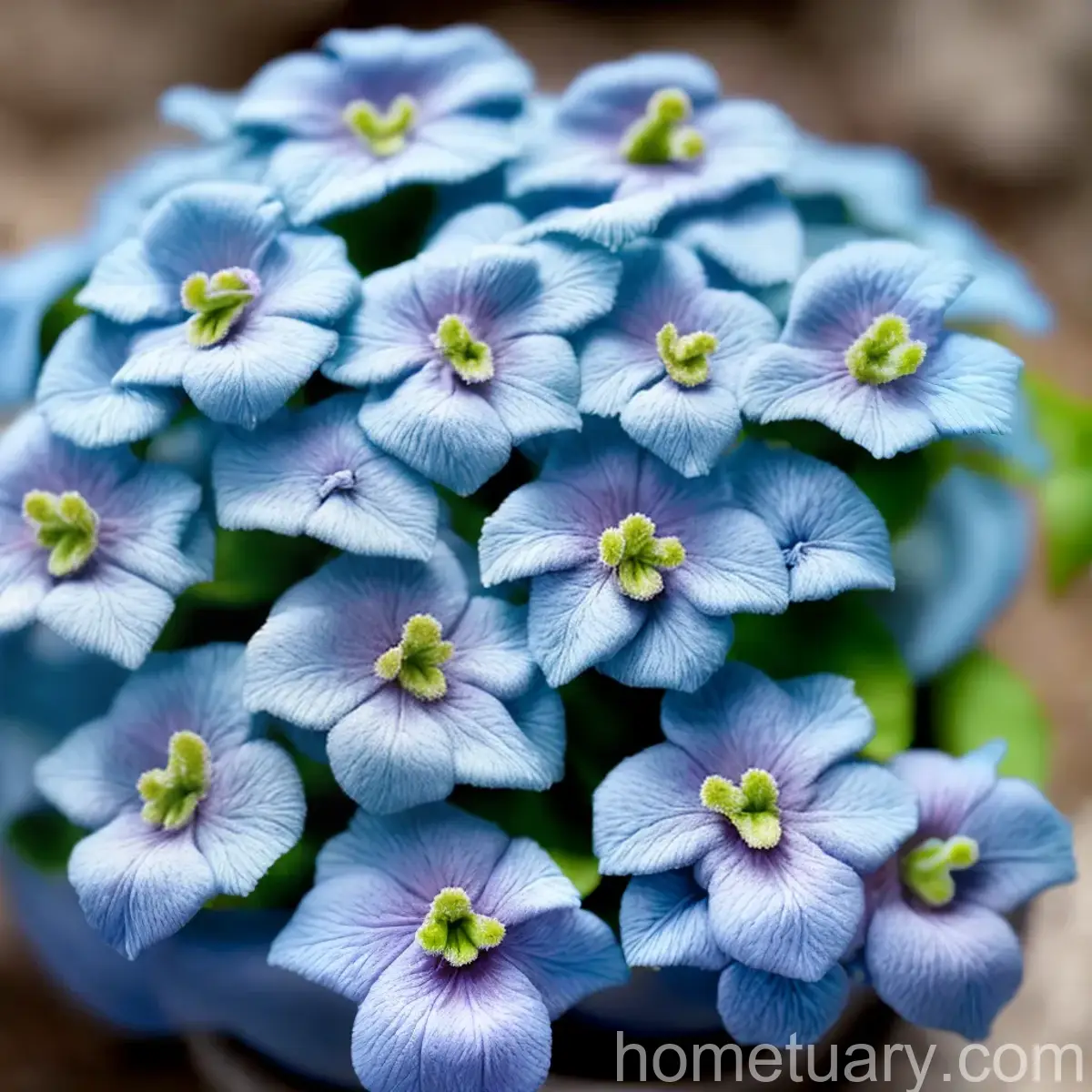Evergreen Azalea (Rhododendron ‘Atalanta’) – A Complete Guide
Evergreen azaleas are popular and beautiful ornamental plants that grace gardens with their vibrant colored flowers and lush foliage. Among the various cultivars of evergreen azaleas, Rhododendron ‘Atalanta’ stands out for its stunning characteristics and adaptability to different growing conditions. In this comprehensive guide, we will delve into the care, cultivation, propagation, and maintenance of evergreen azaleas, focusing specifically on the Rhododendron ‘Atalanta’ variety.
What is a Plant: Evergreen Azalea (Rhododendron ‘Atalanta’)?
Evergreen azaleas belong to the Rhododendron genus and are known for their year-round foliage, vibrant flowers, and compact growth habit. Rhododendron ‘Atalanta’ is a popular cultivar cherished for its striking floral display and evergreen nature. Native to Asia, these plants have found widespread popularity in gardens, parks, and landscapes across the globe.
Below, we’ll explore key aspects of caring for Rhododendron ‘Atalanta’ and cover various topics such as culture, uses, water requirements, sunlight exposure, fertilizer needs, soil preferences, pruning techniques, propagation methods, container gardening, common diseases, pest control, and interesting facts about these fascinating plants.
Key Takeaways – Evergreen Azalea (Rhododendron ‘Atalanta’)
Before we dive into the specifics, let’s highlight some key takeaways to provide an overview of the important aspects of caring for evergreen azaleas, particularly the Rhododendron ‘Atalanta’ variety.
- Rhododendron ‘Atalanta’ is a cultivar of evergreen azalea known for its vibrant flowers and year-round foliage.
- Proper watering, suitable sunlight exposure, fertilization, and well-draining soil are essential for the healthy growth of ‘Atalanta’ azaleas.
- Pruning and propagation techniques play a crucial role in maintaining the shape and vigor of these plants.
- Careful monitoring to prevent diseases and effective pest control measures are vital for ensuring the long-term health of ‘Atalanta’ azaleas.
With these key points in mind, let’s delve deeper into each aspect of caring for Rhododendron ‘Atalanta’ and explore how to cultivate these beautiful evergreen azaleas successfully.
Culture
Cultivating evergreen azaleas, including the ‘Atalanta’ variety, requires an understanding of their specific cultural needs. From water and sunlight to soil and fertilizer, each aspect plays a crucial role in ensuring the well-being of these plants. Let’s explore the cultural requirements of Rhododendron ‘Atalanta’ in detail:
Water
Proper watering is essential for the healthy growth of evergreen azaleas, as they require consistent moisture without waterlogged conditions. Here are some key points to consider for watering Rhododendron ‘Atalanta’:
– Consistent Moisture: Ensure that the soil around the root zone stays consistently moist, especially during dry periods.
– Avoid Waterlogging: Prevent waterlogging, as overly saturated soil can lead to root rot and other problems.
– Mulching: Applying a layer of organic mulch around the base of the plant can help retain moisture and regulate soil temperature.
Sunlight
The ‘Atalanta’ variety of evergreen azalea thrives in partial shade to filtered sunlight conditions. Consider the following sunlight requirements for optimal growth:
– Partial Shade: Provide dappled shade or morning sun with afternoon shade to protect the plants from intense midday sunlight.
– Protection from Hot Afternoon Sun: Shield the plants from direct exposure to hot afternoon sun, as it can cause leaf scorch and reduce overall plant vigor.
Fertilizer
Fertilizing evergreen azaleas with a balanced and acidic fertilizer is crucial for promoting healthy growth and vibrant blooms. Take note of the following fertilizer requirements for Rhododendron ‘Atalanta’:
– Acidic Fertilizer: Use a specialized acidic or rhododendron fertilizer to maintain the appropriate soil pH and provide essential nutrients.
– Regular Feeding: Apply fertilizer in early spring before new growth emerges and again after the blooming period to support the plant’s nutrient needs.
Soil
Proper soil conditions are paramount for the successful cultivation of evergreen azaleas, including the Rhododendron ‘Atalanta’ variety. Consider the following soil preferences:
– Well-Draining Soil: Ensure the soil is well-draining to prevent waterlogging, which can be detrimental to the plants’ roots.
– Acidic pH: Aim for a slightly acidic soil pH ranging from 5.5 to 6.0 to create an optimal growing environment for ‘Atalanta’ azaleas.
Pruning
Pruning plays a vital role in maintaining the shape, health, and blooming potential of evergreen azaleas such as Rhododendron ‘Atalanta.’ Proper pruning techniques can help control the plant’s size, encourage new growth, and remove diseased or damaged parts. Here are essential points to consider when pruning ‘Atalanta’ azaleas:
– Timing: Prune evergreen azaleas immediately after the blooming period to allow adequate time for new growth and bud development for the following season.
– Selective Pruning: Remove dead or diseased branches, spent flowers, and any excessively crowded or crossing branches to promote air circulation within the plant.
– Shaping: Use pruning shears to shape the plants according to the desired form, taking care to maintain a balanced and natural appearance.
Propagation
The propagation of evergreen azaleas, including the Rhododendron ‘Atalanta’ variety, can be achieved through various methods such as stem cuttings, air layering, and seed propagation. Here’s an overview of the key points to consider when propagating ‘Atalanta’ azaleas:
– Stem Cuttings: Propagate ‘Atalanta’ azaleas from semi-hardwood cuttings taken in late summer, ensuring they have a heel and using a rooting hormone to encourage root development.
– Air Layering: Encourage root formation on a stem while it is still attached to the parent plant, and then separate the rooted portion to create a new plant.
– Seed Propagation: While less common, seeds can be collected from mature azalea pods and grown under controlled conditions to produce new plants, though this method may take longer to produce mature plants.
Container Popularity
Evergreen azaleas, including the ‘Atalanta’ variety, are often grown in containers due to their compact size and attractive appearance. Container gardening provides flexibility in terms of placement and allows for easy control of soil conditions and sunlight exposure. Keep these points in mind when growing ‘Atalanta’ azaleas in containers:
– Well-Draining Containers: Use pots or containers with sufficient drainage holes to prevent waterlogging and ensure proper aeration to the roots.
– Appropriate Potting Mix: Choose an acidic potting mix specifically formulated for acid-loving plants to provide the necessary nutrients and maintain the desired soil pH.
– Regular Monitoring: Check the moisture levels in the container and adjust watering frequency as needed to keep the soil consistently moist but not waterlogged.
Common Diseases
As with many ornamental plants, evergreen azaleas, including Rhododendron ‘Atalanta,’ are susceptible to certain diseases that can affect their overall health and appearance. Being proactive in identifying and addressing these issues is essential for disease prevention and management. Here are some common diseases that may affect ‘Atalanta’ azaleas:
– Powdery Mildew: A fungal disease that appears as a powdery white substance on the leaves, affecting plant vigor and aesthetics.
– Leaf Spot: Characterized by dark spots or lesions on the leaves, often caused by fungal or bacterial pathogens.
– Root Rot: Overly moist or waterlogged soil can lead to root rot, resulting in wilting, yellowing foliage, and eventual plant decline.
Disease Diagnosis
When observing signs of disease on evergreen azaleas, accurate diagnosis is key to implementing effective treatment and management strategies. Here’s how to approach the diagnosis of common diseases in Rhododendron ‘Atalanta’:
– Visual Inspection: Examine the plant carefully, looking for specific symptoms such as discoloration, spots, or unusual growth patterns.
– Consulting Experts: Seek guidance from local horticulturists or plant pathologists to identify the specific disease and determine the appropriate course of action.
– Cultural Management: Implement cultural practices such as proper watering, adequate spacing, and proper air circulation to reduce the risk of disease development.
Common Pests
In addition to diseases, evergreen azaleas, including ‘Atalanta’ cultivars, can be susceptible to pests that may infest the plants and compromise their health. Here are some common pests to watch out for:
– Azalea Lace Bug: These small insects feed on the undersides of the leaves, causing a stippled or speckled appearance and weakening the plants over time.
– Spider Mites: These tiny arachnids can infest the foliage, leading to stippling, webbing, and overall decline in plant health.
– Scale Insects: Scale insects may appear as small, waxy bumps on the stems and leaves, sucking sap from the plant and potentially causing wilting and dieback.
Botanist’s Tips
To ensure the successful growth and maintenance of evergreen azaleas such as Rhododendron ‘Atalanta,’ it’s important to consider a few additional tips from a botanist’s perspective. These tips can help enhance the overall health and beauty of the plants:
– Regular Monitoring: Keep a close eye on the plants for signs of stress, disease, or pest infestations, addressing any issues promptly.
– Appropriate Feeding: Provide balanced and appropriate fertilization to support healthy growth and vibrant blooms.
– Prudent Pruning: Use proper pruning techniques to maintain the desired shape and encourage new growth each year.
Fun Facts
As we explore the world of evergreen azaleas, it’s interesting to note some fun and intriguing facts about these beautiful plants. Here are a few captivating tidbits about Rhododendron ‘Atalanta’ and evergreen azaleas in general:
– Cultural Significance: Evergreen azaleas hold cultural significance in various regions and are often associated with themes such as rebirth, renewal, and abundance.
– Ecological Value: Azaleas provide nectar and pollen for bees and other pollinators, contributing to the ecosystem’s biodiversity.
– Historical Connection: Azaleas have been cultivated for centuries, with some varieties tracing their origins to ancient gardens and landscapes.
While exploring these fun facts, we gain a deeper appreciation for the multifaceted role of evergreen azaleas in our lives and natural surroundings.
Links to External Resources
For further exploration and detailed information on evergreen azaleas, Rhododendron ‘Atalanta,’ and related topics, the following external resources offer valuable insights and practical guidance:
- American Rhododendron Society
- Royal Horticultural Society: Growing Azaleas
- University of Georgia Extension: Azalea Care Calendar
- The Azalea Society of America
These resources provide a wealth of knowledge and expertise, offering comprehensive guidance on the care, cultivation, and appreciation of evergreen azaleas, including the beloved Rhododendron ‘Atalanta’ variety.
Conclusion
In this comprehensive guide, we’ve explored the captivating world of evergreen azaleas, focusing specifically on the Rhododendron ‘Atalanta’ variety. Through an in-depth look at various aspects of care, cultivation, and maintenance, we’ve gained a deeper understanding of the cultural requirements, propagation methods, disease management, and more.
With a blend of expert insights, practical tips, and fascinating facts, we’ve unraveled the rich tapestry of evergreen azaleas, highlighting their beauty and resilience in gardens and landscapes around the world. As we continue to appreciate and nurture these remarkable plants, we are reminded of the enduring charm and timeless allure of Rhododendron ‘Atalanta’ and its counterparts in the evergreen azalea family.

